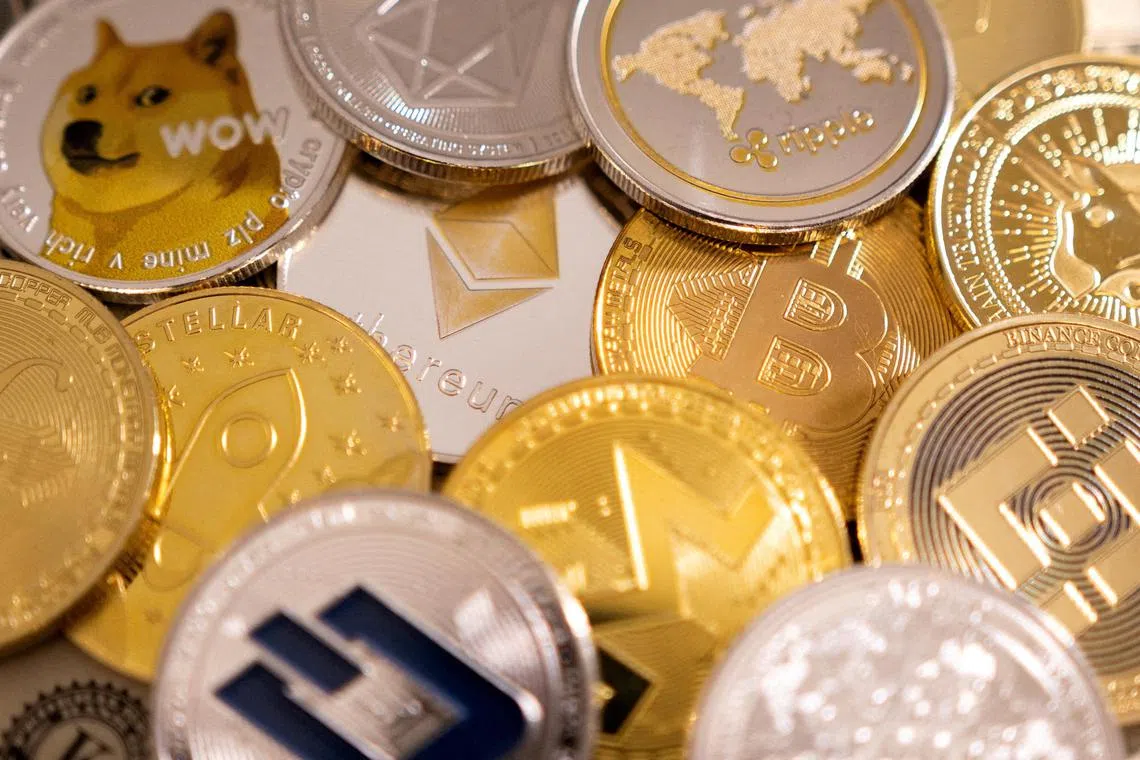Loyalty points are crypto’s new bait
Sign up now: Get ST's newsletters delivered to your inbox

Crypto start-ups are offering airline-like loyalty points to attract more devoted users, without saying what their points can be used for.
PHOTO: REUTERS
Follow topic:
New York - An increasing number of digital-asset start-ups are offering airline-like loyalty points as they seek to attract more devoted users, even though most have yet to define what the rewards actually entail.
Loyalty programmes have sprung up in response to a once-favourite marketing ploy – the token airdrop – in which projects give away crypto tokens to users. But the industry is rethinking this tack because many airdrops have done little to retain users while regulatory scrutiny has swelled over tokens themselves.
The fledgling points programmes already have their detractors, with many users bemoaning a lack of transparency – most have not explained how their points can be used – while experts warn they may pose regulatory risks of their own.
The trend took off in November when new blockchain project Blast lured users by rewarding them with points. Even without a live blockchain, Blast has since attracted more than US$1.3 billion (S$1.75 billion) worth of crypto from users who can only speculate what the points can be used for later. In a post thread on social media platform X, Blast said only that the points can be redeemed on May 24.
The crypto community has criticised the Blast points programme as a marketing ploy to get people to commit their tokens and refer new users. Some critics have even said the approach is reminiscent of a Ponzi scheme, which Blast’s founder Tieshun Roquerre has denied.
Despite the initial backlash, Blast’s success has led to other new blockchain projects kicking off loyalty points programmes, including Manta and Mantle – both of which saw dramatic growth in the past few months in the total value of cryptocurrencies sent to their platforms, with Manta attracting US$1.59 billion worth of tokens and Mantle receiving US$312 million, according to data from L2beat.
The rookie points programmes could be a sign that the industry is maturing, according to Mr Christopher Newhouse, an analyst at digital-asset venture fund Cumberland Labs.
“It’s kind of a shift in terms of the product and strategy and marketing side of crypto really starting to take over,” Mr Newhouse said in an interview. “You’re starting to see people be like, ‘Oh, okay, how can we actually gamify this and get more people interested in using our protocol?’”
At issue is whether tokens are considered securities and, according to the United States Securities and Exchange Commission, most are. Yet, none is registered, as required, with the regulatory agency. By switching to point rewards from airdrops, the situation becomes a little more vague.
“If they are truly points, there are fairly well-established rules projects can follow,” said Ms Emily Meyers, general counsel at crypto venture fund Electric Capital, adding that a points launch can be cheaper and faster than trying to comply with US securities laws for a token launch. But if the points are designed as a cryptocurrency, just without being on the blockchain, then “there’s no difference in regulatory risk”, she said.
Indeed, many projects that started loyalty programmes have been vague about the role of their points. That has resulted in even more speculation about their real value from crypto traders. Platforms like Whales Market let users trade points of different projects. For example, people can buy and sell points of crypto project EigenLayer, which are valued at an average 10 US cents each on Whales Market, without even knowing what the points can be used for. The project’s document said EigenLayer’s points are a measure of a user’s contribution to the project.
They are basically saying, “we want to incentivise people but be very non-committal on what those incentives actually are and like, what they’re actually gonna get out of it”, said Mr Matt Kunke, research analyst at digital-asset investment firm GSR.
Furthermore, most loyalty points programmes are not recorded on the blockchain, making them more obscure. So, unlike airdrops, it is hard to estimate the size of the points market.
Electrical Capital’s Ms Meyers said: “Tokens are meant to convey ownership; they’re bearer assets and can operate on decentralised systems without relying on the issuer. But points are under exclusive control of the issuer and can be revoked or have their value changed at any time.” BLOOMBERG

